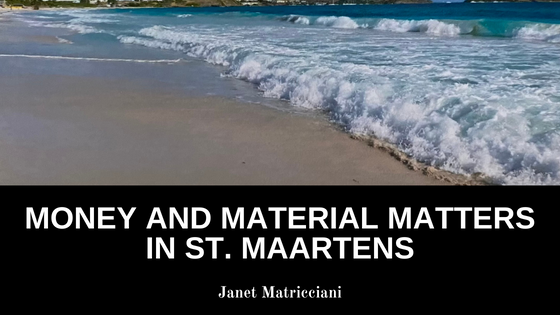Is it St. Maartens, as the Dutch call it, or St. Martin as per the French the island has changed hands so many times, it is hard to know what to say for your final destination as you board the plane. Half the island is Dutch and half French. The Dutch have the advantage of the land where the single international airport is situated, but the French side is less built up, less touristy and a bit more charming.
Once you have gotten over the crisis of what to call the place you are visiting, you’re ready for a week of eating and swimming in the warm weather. There really is not much else to do on the island – except a variety of illegal drugs easily available, if you are so inclined. This is actually a big problem with the local youth population who have little to do in the evenings (there is only one cinema on the island) and so resort to expanding their mind in non-physical ways.
From a cultural viewpoint, the best you can do on this small island is visit one of the two museums. Each are only a few rooms in size and talk about the history of the island, from early settlers until the turn of the century. The better of the two is the St. Martin’s Museum in Marigot, which has several rooms describing the history from the Arawaks up until 1994, where I guess interesting development stopped. There are many black and white photographs of life in the early 1900s. The weaker version is in Phillipsburg – the St. Maartens museum, naturally – and has just one large room with relics taken from shipwrecks. It is a valiant effort by the local community to instill some sense of historical understanding in tourists, but given only a few visit each day, it is unlikely to be having much effect. Phillipsburg remains a typical cruise-ship town. The giant boats dock on the keyside (no need for dinghies) and spill their passengers right onto the boardwalk. Unsurprisingly, the town is filled with crappy souvenir and expensive jewellery shops. I highly recommend The Art of Time for a diamond or gold style purchase. Prices are about 15% lower than in the US for name brands like Marco Bicego or Roberto Coin. There’s not much else to do in this town than shop, eat ice cream on the boardwalk or sunbathe along the clear golden sands of the beach.
Marigot has much more potential. Firstly for art, the Roland Richardson Art Gallery showcases work of the eponymous artist who has lived for years on the island. I particularly liked his etchings. The Minguet Art Gallery, which is a fifteen minute drive out of town on Rimbaud Hill has the colourful paintings of this artist, perhaps the most wildly known St. Martian (spelling?) outside of the island, and is run by his daughter. His work is also presented in Paris regularly though he died in 1996.
Aside from two tiny museums and two local artists, for culture, there are always the ruined forts from the days of the British / French / Dutch rule. Each party seemed determined to improve what was there already or build their own defences as the island changed rulers every third Wednesday, or so it seems from a quick historical read. Fort Amsterdam and Fort Louis are the two worth visiting. The former is outside Phillipsburg, protecting the harbor from intruders. I found I could train one of the cannons perfectly on target for the massive cruise ship in the harbor below, but alas the fusillage had not been kept in good order, so I missed a hugely desirable hit. The views from both forts are spectacular. The climb to Fort. St. Louis, up 140 steps behind L’Oiseau restaurant in Marigot, has its own set of cannons and ruined walls. Once again, the view is worth the climb – right over the brightly-coloured painted storefronts of downtown Marigot.
Excursions around the island to pass the time between swimming and eating give glorious views of St. Barts and Saba. I wasn’t that impressed by the beaches. Orient Bay is the most famous one and we went there every day, but really it is just a reasonably long stretch of sand with restaurant after restaurant offering food and especially drinks and loud music. You have to pay for the beach chairs if you don’t want to imbibe. The adventurous can go all the way to the end of the beach to the nudist section and thus ensure they do not get tan-lines to spoil the look of their strapless cocktail dresses back home. I preferred Grand Case – which has a nice little restaurant where you can get a cooked breakfast at the Rainbow Café, and then hang out on their beach chairs all day and swim in the calm waters. Much less crowded or touristy than elsewhere on the island. Speaking of food, bring a stuffed wallet. It is quite incredible how much a meal costs. Prices are comparable to top restaurants in New York City. I can’t fault the food at Sol E Luna, but was it really worth $300 for the five of us (two adults and two children) having just a main course and dessert? That left a bad taste in my mouth in spite of the food. Rancho del Sol has excellent kebabs and a friendly dog (to pat, this is not a food recommendation), but again to pay $200 for one course each and a couple of drinks seems way out of line. Big Fish in Oyster Bay has the high prices but not the good food. In fact, the food was quite tasteless so avoid this one. Even pizza for five will set you back $140. Mama Pizza in Oyster Bay is a cut above Domino’s but not gourmet food. Nevertheless, at $20 a pizza, it should have been with caviar. You can always buy anything you wanat and eat DIY if you purchase ingredients at one of the many supermarkets on the island – Simply Market on the French side is one of the larger ones. However, every single item is imported from France or Italy or elsewhere so it will still cost quite a bit. (The restaurants also import all their ingredients once a week on giant planes from Europe – this is part of the reason they are so expensive. It’s quite sad really that a beautiful, sunny Caribbean island does not even grow its own bananas. In fact, I couldn’t even find nice-looking bananas in any of the supermarkets.)
Breakfast out provides a variety of options such as Sarafina’s in Marigot for pastries and coffee and a few hot breakfast options like quiche, Aux Fines Gourmandaises that has just pastries and coffee, and our favourite: Zee Best in Simpson Bay (very near the airport, so a perfect stop to top up before boarding the flight home, by the way). Zee Best is run by a very sweet French chap, it’s so good it’s crowded, and has omelettes, pastries, juice and coffee. It’s not cheap, but I think by now you’ve realized that is just par for the course on this island.
A week in St. Martin / Maartens is enough to do everything you could possibly want and eat out in a different restaurant every breakfast and dinner (quick shout out to Le Piment in Orient Bay, which has very nicely done French food – and other restaurants either side, so many choices). However, a week also may be too long for some people. We got so desperate for new adventures that we found a place called Old Spring House Plantation online. When we got there, we found a decaying house, boarded up, with old wrecked cars out in front. Tick in the box for “Done St. M.” and we were off back to colder more culturally interesting locations.

